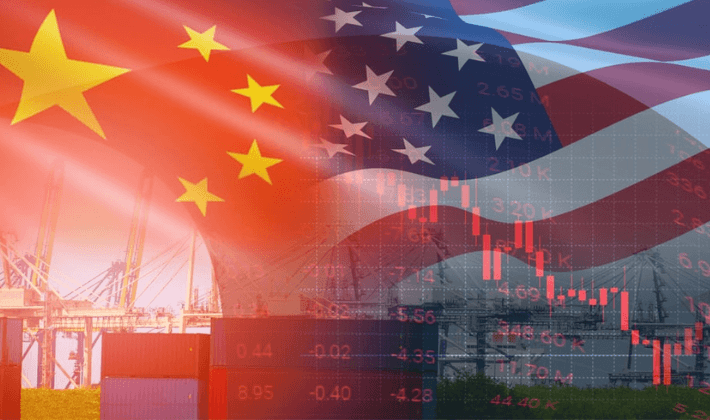
The U.S. and China are, arguably, the two most formidable political powers in the world – not to mention the two largest economies. There’s always been a power struggle between the two, and today, it’s easy to see a growing divide. Not only is their political tension in terms of domestic and global policy, but there’s an increasingly adversarial economic relationship between them as well.
It’s creating tensions that have begun to affect the way the U.S. and China trade not only with each other but with the rest of the world.
Discontent in the Global Trade Market
Trade tensions with China aren’t a new development. Over the past several decades, political disagreements have manifested in everything from trade sanctions to supply chain reconfiguration as a hedge against economic leverage. In the meantime, the broader international community awaits the fallout of rippling trade ramifications.
Often, when the U.S. and China trade economic jabs, the result manifests in rising global trade costs. For example, the cost of 2020 tariffs on Chinese steel and aluminum amounted to more than $350 billion for the U.S., which trickled into other trade agreements via rising material costs and delayed lead times.
And while the cost of goods rises, so do the costs of transporting those goods. Each time China and the U.S. clash, every link in the supply chain begins to consider the cost implications.
Current Tensions are Reaching an Apex
The COVID-19 pandemic was a major complication not just for supply chains but also in rebuilding them. Many experts have begun to suggest the pandemic has in some ways irreversibly crippled key connections between the U.S. and China and created a vacuum for other global trade partners.
Take China’s zero-tolerance COVID-19 policy, for instance. While the rest of the world resumed activity following vaccination availability, China continues to have sporadic lockdowns that grind trade relations to a halt. Meanwhile, the U.S. has passed legislation that includes a bipartisan infrastructure modernization bill and the CHIPS Act, which seek to enhance domestic production and reduce reliance on imports.
These actions aren’t just driving a wedge further into U.S.-China trade relations; they’re also creating an uncertain future for supply chain managers and those who facilitate freight.
An Increasingly Complex Trade Landscape
With the global trade landscape evolving, there’s growing concern among supply chain professionals about the complexity of dealing with cross-border freight operations.
What’s the best way to handle multinational invoice remittance? What does the ever-complicated landscape of trans-Pacific Ocean freight surcharges, fees, adjustments, rules, exceptions, and exclusions look like? Do your existing freight partnerships or service agreements still make sense?
The U.S. and China have engaged in trade battles for decades, and there’s increasing evidence that volatility will spike in the coming years. This means a wave of uncertainty in the freight market. Instead of trying to look ahead and anticipate what will happen, companies must look backward and use the data they have to make forward-looking decisions.
Freight invoice audits provide an opportunity to understand how disruptions affect freight operations and to plan for them in the future. And — increasingly more important — freight invoice audit will help companies avoid overpaying freight costs as the landscape evolves.
U.S.-China relations have been on a steady decline for some time now and today appear on the precipice of historic change. As shippers work to navigate the turbulence, freight invoice audit will become an increasingly important tool in maintaining the integrity of global freight ops. Learn more about how nVision Global can help at corporate.nvisionglobal.com.